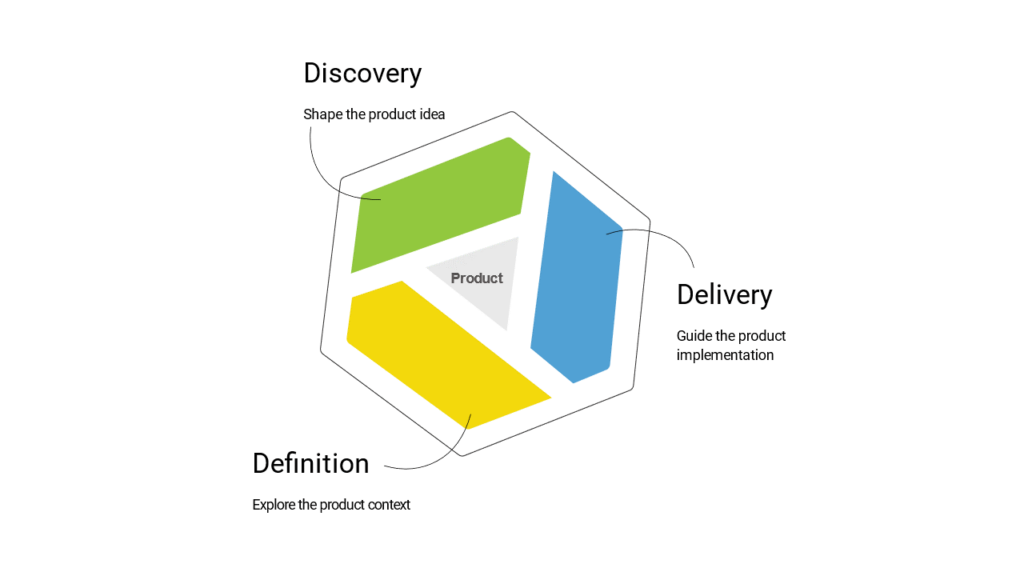
Von Nicolas Olberg
Estimated reading time: 5 minutes
What does a digital designer do?
“Nic, I’m sorry, but what do you actually do at your job?” A longtime friend of mine asked me this question a few weeks ago, somewhat embarrassed. No shame in that. No matter how well someone knows about software projects, this question is not so easy to answer. So what am I doing? When we…
“Nic, I’m sorry, but what do you actually do at your job?”
A longtime friend of mine asked me this question a few weeks ago, somewhat embarrassed. No shame in that. No matter how well someone knows about software projects, this question is not so easy to answer. So what am I doing?
When we build something – be it a ship, a house or software – we need more than just craftsmen to turn an idea into reality. It needs a vision, a concept, an optical design, possibly a prototype and much more that doesn’t have so much to do with the actual construction.
As a digital designer I see myself as a mediator between idea and implementation. I question the idea, open up problem and solution space once again, evaluate the project context or the technical feasibility. In the end, I make sure that the technical concept of an IT product is rounded off and that the vision and the resulting user stories create a meaningful overall picture. And in time! So that the development team does not have to program everything twice or three times. Because – let’s face it – with all the agility, some loops that you could turn are superfluous if you master your tools and sound out the right direction early on. Such loops always cost time and money. That’s why I’m convinced that digital design in a software project will make the product faster, better and cheaper.
Basically I divide my work into three product levels: Delivery – Definition – Discovery

Delivery
Of course, I am not alone in ensuring the benefit of a product. Usually I work closely with the product owner on the customer side. I support him primarily in the requirements elicitation and prioritization. This means that we continuously develop a professionalism and the product vision together. In doing so, I check the influencing factors, use cases and effects of the digitisation idea and thus develop the underlying concept of the end product – both professionally and technically.
I work both visibly through personas, story maps or initial backlogs, for example, and “behind the scenes” through functional architectures or process engineering. I do not go too deep, but try to create the optimal basis for a smooth start into the agile implementation phase.
But when the “craftsmen” then join in the “delivery phase” and start building, my work is definitely not over. Together as a team we design the details of the product, fill the concept with life and expand the product piece by piece.
Definition
In the preliminary stage, the product definition, I first explore the idea and its context, without necessarily translating it directly into implementation artifacts. In doing so, I can also come to the conclusion with the customer that a project does not make sense at all. The reasons for this can be many and varied: insufficient business case, too many overlaps with similar projects or systems, risks that cannot be eliminated or an elementary change in the corporate environment. I illuminate such aspects, for example, on the basis of stakeholder workshops and interviews. The insight to not pursue something further is also very valuable. Here, money can quickly be saved by not investing further in an idea. A deliberate “product definition” contrasts with “just build on it”.
Discovery
The nature of my projects is different. I often help my clients to unify and centralize individual or outdated solutions. For example, converting numerous complex Excel solutions into a cloud solution with a modern web interface. When customers think digitalization one step further, it becomes even more exciting for me.
By “thinking further,” I mean that someone wants to open up a completely new business model with us – transforming themselves consistently. This is where my claim is to advise the customer right from the value definition and solution variety stage and thus sharpen his business model. In doing so, we jointly ask ourselves many questions regarding motivation, professional focus, future users and other aspects. For example, topics such as data protection or sustainability can also play a role in discussing the value of the project. When we finally design this new business model together, both professionally and technically, and bring it live to the user as quickly as possible, I think this is the best way to generate real added value through digital design.
“Standstill is death”
The versatility of these three levels is only one reason why this job fulfils me. Four themes drive me every day.
1. I love working with people.
2. I love technology that provides benefits and makes life easier.
3. I enjoy modelling technical challenges in such a way that they can be turned into software.
And 4. I like to constantly develop myself further. Because standing still is death.
Fortunately, I can live out all these passions in my job as a digital designer.


